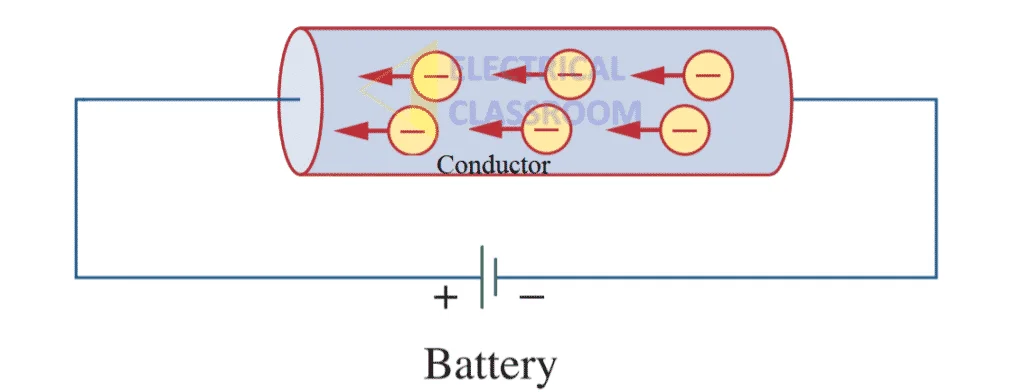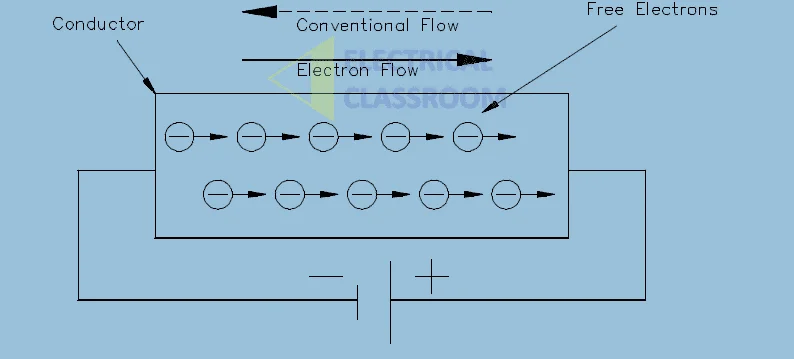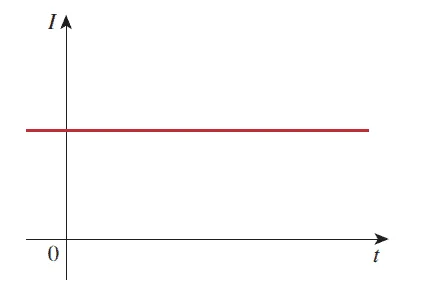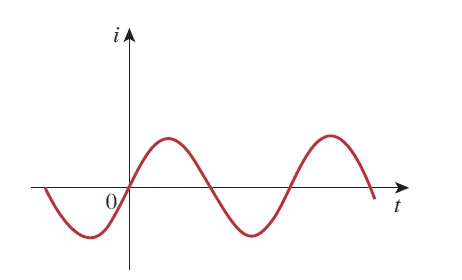To understand the basics of electricity it is necessary to understand the concepts of electric charge and current. Electrically charged particles are present in every matter in the universe. The unique property of these charged particles is that it can move on the application of an external force. This article aims to help you understand the basics of electric current and their properties.
Definition of current
Electric current is normally referred to as the flow of charges through a conductor. It can be defined as the amount of charge that flows past a cross-section area in a conductor. In other words, the term “current” can be defined as the rate of flow of charges through a conductor. Electrons are the most common charge carriers. Consider that a copper conductor is connected to a battery as shown in the figure below:

The electrons in the valance band of a copper conductor can easily move from one atom to another and these electrons move randomly in all directions. When a potential difference is applied, the movement of these electrons is restricted and controlled. Hence, when the conductor is connected to a battery, all electrons start moving towards the positive terminal (since electrons are negatively charged they get attracted towards the positive terminal). This motion of negatively charged electrons constitutes the current flow.
Unit of current
Since the current is the amount of charged particles crossing the cross-section of a conductor in unit time, naturally its unit is Coulombs per second. This is renamed to Ampere after a French scientist named André-Marie Ampère for his contributions to the field of electrodynamics. He is known as the Father of Electrodynamics.
One ampere is defined as the flow of one coulomb of charge per second through a conductor (i.e.) 6.28×1018 electrons per second.
The direction of current flow
Benjamin Franklin assumed charge accumulation as a buildup of an invisible fluid. The concept of electrons and atomic structure were not known at that point in time. He assumed the accumulation of charge as positive and vacant of charge as negative. Hence charge is assumed to be flowing from the positive to negative. This concept is known as conventional current flow. Later, the discovery of electrons by J. J. Thomson and the discovery of charge of electrons by Robert Millikan let to a revolutionary change in the concepts of charge accumulation and current flow. These discoveries brought to light the actual direction of current flow.

As we all know electrons in the valance band of conductors are attracted by the positive potential and move towards it constituting the current flow. Since electrons are negatively charged, the actual charge flow happens from the negative to the positive.
Current Density and drift velocity
The net amount of current flowing through a conductor per unit cross-sectional area per unit time is known as current density. It is denoted by the alphabet J. The velocity of electrons per unit time is known as their drift velocity
Direct current
Direct current (DC) is always constant and flows in the same direction. It can be called as unidirectional current. A DC power source consists of two terminals: a positive and a negative. When the load is connected between these terminals current flows from one terminal to the other. It can be from the negative terminal to the positive terminal in case of electron flow or it can be from the negative terminal to the positive terminal in case of ion flow. The common example of a DC power source is the normal wall clock battery.

Alternating current
Alternating current is time-varying in nature. The direction of current flow changes constantly. All our household appliances run on alternating current. An alternating current is sinusoidal in nature. The most common source of alternating power is an Alternator or an AC-generator. The magnitude and polarity of alternating current changes constantly. Normally no polarity is marked on alternating power sources.

Conductors and Insulators
All matter in the universe is made up of atoms. Atoms consist of electrons. In some materials, electrons are very loosely bound to their atom. These materials permit free motion of a large number of electrons and can be made to flow by the application of external force. Such materials are called conductors. Copper, aluminum, silver, gold, etc are very good conductors. Almost all metals are good conductors of electricity.
Insulators are bad conductors of electricity. The electrons in insulators are very tightly bound to the atom and required a very large amount of energy to free them. Wood, plastic, glass, etc are good insulators.
How to measure electric current?
Electric current is measured using a device called an ammeter. There are various types of ammeters available. It is connected in series to the circuit such that full current flows through its coil. For the measurement of high alternating currents, current transformers are used and the ammeter is connected across its terminals.